Friday, August 10, 2007 ♥
RAY DIAGRAM OF A CONVEX OR CONVERGING LENS
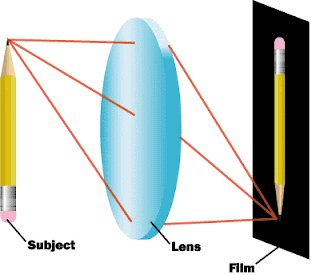
♥
RAY DIAGRAM OF A CONCAVE OR DIVERGING LENS
RAY DIAGRAM OF A CONCAVE OR DIVERGING LENS
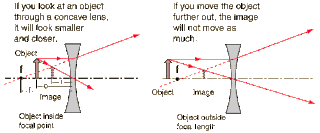
♥
THE EYE AND THE CAMERA
THE EYE AND THE CAMERA
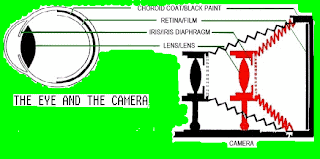
Light is excluded or permitted to enter by the eyelids, the equivalent of the camera shutter. The iris contains the variable opening, the pupil which regulates the amount of light entering and is the aperture of a camera. The diaphragm contains the aperture of the camera, so it is similar to the iris, which contains the pupil. The lens of the eye is a biconcave, transparent structure which is responsible for focusing. The innermost coat, the retina, lies behind the lens. It contains the optic disk, or blind spot, which is the junction of nerve fibers passing to the brain. It is the counterpart of the film in a camera. The film stores the photographic chemical record of data. The lens of the camera draws the light into the camera and focuses it on the film plane. To prevent the blurring of images by internal reflection, the inner walls of the camera-- the choroid layer in a human eye-- are painted black.
♥
RAY DIAGRAMS OF A CONCAVE MIRROR
OBJECT BEYOND C
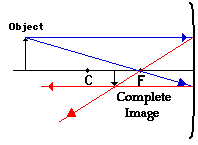
OBJECT AT C
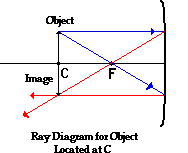
OBJECT BETWEEN C AND F
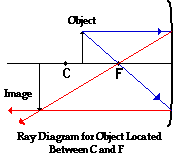
OBJECT AT F
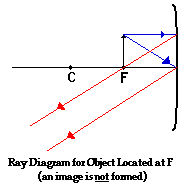
OBJECT LOCATED IN FRONT OF F
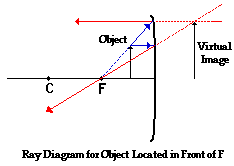
♥
FIBER OPTICS
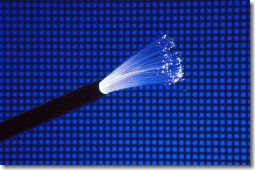
A relatively new technology, fiber optics is the channeled transmission of light through hair-thin glass fibers. The light is prevented from escaping the fiber by total internal reflection--a process that takes place when light ray travels through a medium with an index of refraction higher than that of the medium surrounding it. In this case, the fiber core has a higher refractive index than the material around the core, and light-hitting that material is reflected back into the core, where it continues to travel down the fiber.
Fiber-optic technology had its greatest impact in telecommunications, where optical fibers transmit audio, video, and data information as coded light pulses. In fact, fiber optics is rapidly becoming the preferred mode of transmitting communications of all kinds.
Its advantages over older methods include vastly increased carrying capacity(due to the very high frequency of light), lower transmission losses, lower cost of basic materials, smaller cable size, and almost complete immunity from stray electrical fields(interference).
